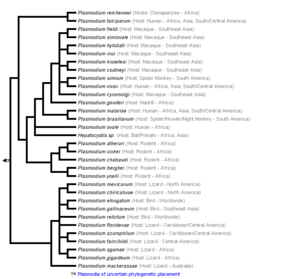Plasmodium Falciparum Control Strategies: Difference between revisions
Ldepilli5046 (talk | contribs) No edit summary |
Ldepilli5046 (talk | contribs) |
||
| Line 15: | Line 15: | ||
<br><br>Other examples: | <br><br>Other examples: | ||
Revision as of 05:19, 26 March 2013
Introduction
Malaria is a deadly disease and is estimated to be endemic in over 100 different countries. It is caused by a parasite of the genus Plasmodium that lives in blood, which was first seen in 1880 by Laveran in Constantine, Algeria. It was later described by Ettore Marchiafava and Angelo Celli in 1885.
There are over 200 different Plasmodium species, but only 11 known types infect humans. Plasmodium
The main vector for the spread of the Plasmodium parasite is mosquitoes. There are many types of mosquitoes , but only some of them suck blood, and only some species are malaria transmitters. The species Anopheles gambiae is one of the most efficient malaria vectors known. More information on the spread of malaria is available at http://microbewiki.kenyon.edu/index.php/Malaria_(Plasmodium_falciparum)_in_sub-Saharan_Africa
Because of the danger that malaria spread poses to so much of the world's population, there have been many studies attempting to uncover new approaches to controlling the spread of the disease.
Other examples:
Bold
Italic
Subscript: H2O
Superscript: Fe3+
Section 1
One approach to malaria control is by control of the mosquitoes which...
why is this here
Include some current research in each topic, with at least one figure showing data.
Section 2
Include some current research in each topic, with at least one figure showing data.
Section 3
Include some current research in each topic, with at least one figure showing data.
Conclusion
Overall paper length should be 3,000 words, with at least 3 figures.
References
http://www.kff.org/globalhealth/upload/7882-04.pdf
Edited by Lydia de Pillis-Lindheim, a student of Nora Sullivan in BIOL187S (Microbial Life) in The Keck Science Department of the Claremont Colleges Spring 2013.

